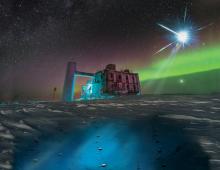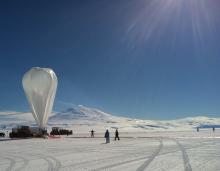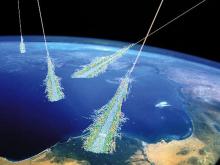Listen to today's episode of StarDate on the web the same day it airs in high-quality streaming audio without any extra ads or announcements. Choose a $8 one-month pass, or listen every day for a year for just $30.
You are here
Quiet Sun
The Sun goes through an 11-year magnetic cycle. At the cycle’s peak, the Sun produces large numbers of dark sunspots and powerful explosions known as solar flares. At the cycle’s low point, the Sun is quiet, with little activity on its surface.
But no two cycles are alike. Some are especially active, while others are unusually quiet. And some of the quietest yet identified may have happened 7500 years ago.
An international team of scientists found this quiet period by studying tree rings. When the Sun is quiet, it allows more cosmic rays to enter the solar system. These particles come from exploding stars and other powerful sources. When they hit Earth’s atmosphere, they trigger showers of other particles. And when those particles reach the ground, they can alter atoms.
In particular, they can change carbon atoms to a radioactive form known as carbon-14. So the ratio of normal carbon to carbon-14 found in tree rings varies based on the amount of solar activity.
The new study found some of the highest levels of carbon-14 yet discovered in the rings of bristlecone pines from the White Mountains of California. The levels were especially high from about 5490 to 5460 BC.
That could mean that the Sun was especially quiet during that period. If that’s the case, then almost no sunspots would have mottled its surface. That would have allowed the cosmic rays to flood into the solar system and hit Earth — leaving traces in ancient trees.
Script by Damond Benningfield






